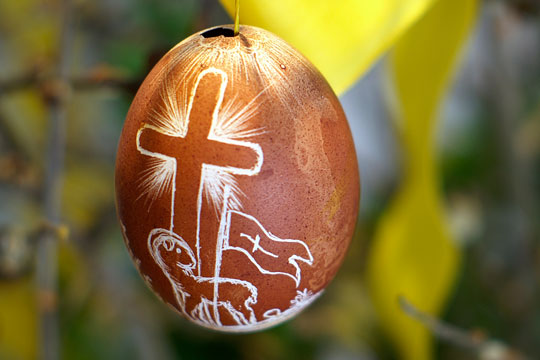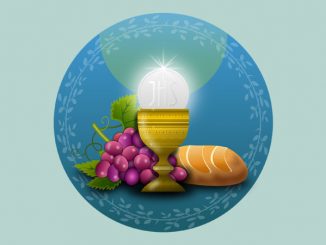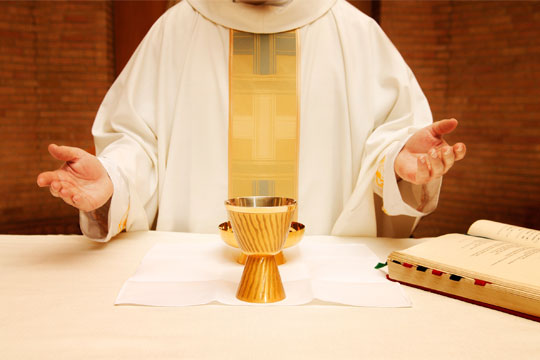
Not long ago during class, a student said, “But Jesus was just a ghost.” I immediately explained that Jesus wasn’t a ghost, but that he had truly risen from the dead. This experience reminded me that we can’t assume our students understand what the Resurrection really means. I want them to understand that Jesus was truly dead and rose to life again.
I begin by using a picture book that combines the Gospel accounts of the Resurrection. Whenever I use a story book, I add my comments and questions to draw out the children’s understanding. I make sure that I emphasize that Jesus truly rose from the dead. I also explain that in rising from the dead, Jesus gives us new life, and that every Sunday at Mass we are celebrating a “little Easter.”
After reading the story, we do two hands-on activities. For the first activity, I use my set of Resurrection eggs. While you can buy a set or find instructions online for making your own, I prefer to make my own set, since most of the sets I’ve found lack the focus on the Eucharist and Paschal Mystery. The set includes an egg carton and 12 plastic Easter eggs. Each egg has a symbol of an event from Holy Week (for example, a silk palm leaf for Palm Sunday, three dimes for the 30 pieces of silver Judas received, a cracker for the bread of the Last Supper, a square of terrycloth for Jesus washing the disciples’ feet, etc.). Along with each symbolic object is a related Bible verse. These eggs present Holy Week, the Passion, and the Resurrection in a way that children can see and touch.
The children sit on the carpet and take turns opening an egg, and they show the rest of the class what the egg contains. I often refer to my prepared notes to make sure that, in all the excitement, I don’t miss any of the key points I want to mention. I have the children repeat the verse or perform an action in response to each egg. For example, they might say, “Thank you, Jesus,” after opening the Last Supper egg and pretend to hammer nails when they open the egg containing nails. The culmination is that the last egg—Christ’s tomb—is empty. There is a moment of confusion followed by a discussion of why that egg is empty. I prompt the children to respond by looking amazed and shouting, “He is Risen!”
Another visual activity I use each year is a Resurrection garden. Again, you can find many examples with a quick online search. In about 15 minutes, I make a diorama by placing a small clay pot in a large pot saucer. On top of the pot, which represents Jesus’ tomb, I place three crosses made out of sticks. The children are always fascinated by this garden. I use it to talk about how Mary Magdalene came to the tomb and how she must have felt to find that the tomb was empty. I keep the garden on our class prayer table throughout the Easter season.
How do you teach about the Resurrection? What activities do you use that accommodate different learning styles?
The With My Family section at the end of Finding God: Our Response to God’s Gifts sessions has ideas for celebrating the liturgical seasons at home, including Easter.





Lovely ideas, and organized, too! Do you have a picture of your Resurrection garden to post?